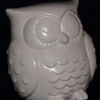Hello everyone,
Generally any liquid that converts into vapor will happen when it reach its boiling point corresponding to its external pressure. the latent heat of vaporization for vaporization depends on the saturation pressure or saturation temperature at which it is boiling.
But in the case of water evaporating in to air, which happens for water below its saturation temperature at the atmospheric pressure.
I would like to know, with respect to what pressure the Latent heat of vaporization of water is to be taken when it evaporates into air below its boiling point of 100 degree centigrade?
Latent heat of vaporization is 2257 KJ/kg at atmospheric pressure. Thank you.

 FB
FB










